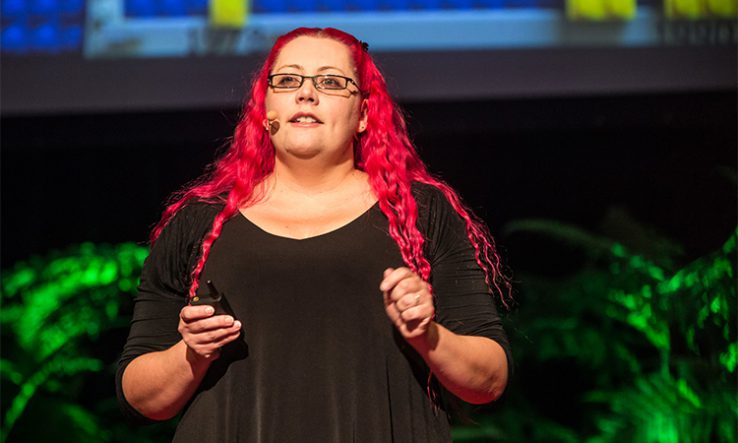
Image: TEDxAuckland [CC BY-NC-ND 2.0], via Flickr
Partnerships with people outside academia are crucial to science communication, says leading New Zealand researcher
Scientists needs to look outside traditional research partnerships to achieve their aims, Siouxsie Wiles, a microbiologist at the University of Auckland, has said.
Wiles (pictured) has been the face of New Zealand’s science communication on Covid-19 thanks to a series of graphic art advertisements and videos on public health issues produced with cartoonist Toby Morris.
In the annual Cawthron lecture on 28 October, staged by the Cawthron Institute, an independent research organisation, Wiles said that the collaboration with Morris “started because we wanted to communicate about the pandemic” and help people to understand why they were being asked to wear a mask.
The advertisements brought together her expertise in science and Morris’s communication skills “to make something that is quite a lot bigger than the two of us”, she said.
The adverts include visual representations of “flattening the curve” and a “Swiss cheese model”, showing how different controls had different flaws but, when combined, created an impervious barrier.
After a career working with chemists and mycologists, “I now have this incredible collaboration with a communicator, a cartoonist,” Wiles said. “I got into this field, microbiology, because I was interested in the microbes and how they do what they do. But what we’re seeing with Covid-19 is that it’s not just the microbes that are important…[they] are important but so are the hosts—us—but so is the environment.”
The “environment” includes the values of the particular country the disease is operating in, she said. “It’s teamwork that stops this virus and stops this pandemic. And this doesn’t just apply to Covid-19. Teamwork also applies to all the other things we’re going to experience—whether that’s climate change or future pandemics.”
The topic of the lecture was ‘why science matters’. Wiles said her research unit was using light-emitting bacteria to study how bacteria behaved in cells and how disease spread, and this year had turned its research to the Covid-19 effort. “If you don’t have vaccines and medicines, stopping the spread of them is very, very important,” she said. “You never know where a discovery’s going to take you, or where it’s going to take somebody else.”
Serean Adams, manager of the aquaculture group at Cawthron, told the online lecture audience that her passion for science had been sparked by witnessing fishery collapses as a child in New Zealand.
“We haven’t fully realised the potential of aquaculture in New Zealand yet,” she said. New Zealand’s aquatic zone is 15 times its landmass but only 0.01 per cent of that is being farmed. Up to 6 per cent has the potential to generate food, she said.